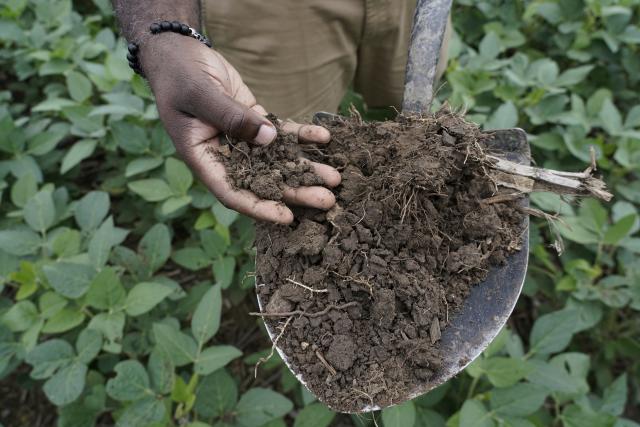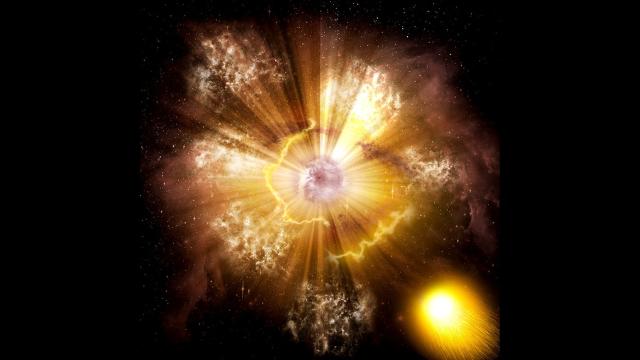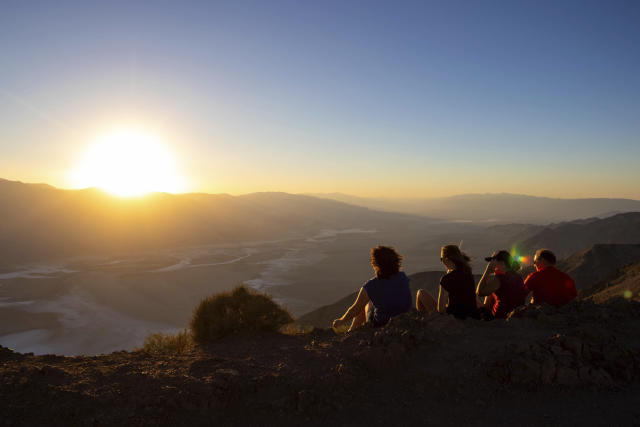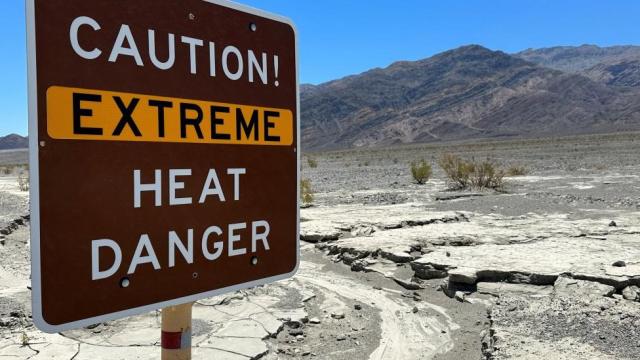Science Daily News | 17 Jul 2023

Views (91)

Super-close supernova captivates record number of citizen scientists
Data from the closest cosmic supernova explosion to Earth for 10 years was collected by a record number of observers for SETI, showing what the collective power of citizen scientists can achieve.

The closest cosmic explosion to Earth in the last 10 years became a record breaker for the Search for Extraterrestrial Intelligence (SET) Institute.
The effort involved 123 dedicated amateur astronomers making 252 observations with 115 telescopes following how light from the supernova changed over time, first seeing its escalating brightness and then tracking its gradual fading. This allowed the SETI scientists to build a profile for the supernova that astronomers called a light curve, a measurement of its brightness over time.
RELATED STORIES:
Participants receive real-time alerts when transient events are spotted, resulting in the rapid initiation of observing campaigns such as the one seen for (SN) 2023ixf. As they monitor the increase in brightness and subsequent fading of cataclysmic events, volunteers help scientists to gather vital details about the objects behind these violent and powerful celestial occurrences and their impact on surrounding gas and dust, known as interstellar material.
The program will get a major boost next year when the Vera C. Rubin Observatory in Chile commences operations, allowing the Unistellar network of citizen astronomers to team up with other crews of astronomers and professional astronomers to study transient events.
Isle of Man sends digital stamps on data storing mission to the Moon
A set of stamps is being sent to the Moon on a mission to explore how data centres work in space.

Digital Manx stamps are to be sent to the Moon on a mission to discover how data centres work in space.
Digital Isle of Man and space data storage company Lonestar are taking part in NASA's Commercial Lunar Payload Services programme.
It aims to explore how data could be stored on the Moon and retrieved should a catastrophe take place on earth.
Enterprise Minister Tim Johnston said the island was building on its "history of innovation in the space sector".
The possibilities this technology could bring were "hugely exciting", and the project was an example of the island participating in "pioneering new developments for businesses", he said.
A government spokeswoman said the initiative was using expertise in the island's blockchain industry to "digitise exclusive stamps that will be posted to the Moon and back" via Lonestar's lunar data centre.
Lonestar CEO Chris Stott said he felt "enormously privileged to be able to run such a novel mission from my home".
He said: "We could not do this without the island and its unique commitment to disaster recovery, space, and the global digital economy."
The government spokeswoman said the digital stamps, which each feature a different version of the triskelion flag, would be verified and tracked on the return trip to the Moon, and the trail would become part of a digital footprint.
They would then be transmitted back to the Earth as part of the larger Artemis lunar exploration programme mission, she said.
Hubble telescope captures stunning shot of spiral galaxy (photo)
A dazzling new photo from the Hubble Space Telescope shows a distant galaxy that hosted a supernova explosion not long ago.

A dazzling new photo from the Hubble Space Telescope shows a distant galaxy that hosted a supernova explosion not long ago.
"The hugely energetic processes during supernova explosions are predominantly responsible for forging the elements between silicon and nickel on the periodic table," NASA officials said in the statement. "This means that understanding the influence of the masses and compositions of the progenitor star systems is vital to explaining how many of the chemical elements here on Earth originated."
RELATED STORIES:
Observations of supernova remnants like the one in UGC 11860 can help astronomers learn more about the star systems that fuel such cosmic explosions.
California's Death Valley sizzles as brutal heat wave continues
Long the hottest place on Earth, Death Valley put a sizzling exclamation point Sunday on a record warm summer that is baking nearly the entire globe by flirting with some of the hottest temperatures ever recorded, meteorologists said. Temperatures in Death Valley, which runs along part of central California's border with Nevada, reached 128 degrees Fahrenheit (53.33 degrees Celsius) on Sunday at the aptly named Furnace Creek, the National Weather Service said. The hottest temperature ever record was 134 F (56.67 C) in July 1913 at Furnace Creek, said Randy Ceverny of the World Meteorological Organization, the body recognized as keeper of world records.

Temperatures in Death Valley, which runs along part of central California's border with Nevada, reached 128 degrees Fahrenheit (53.33 degrees Celsius) on Sunday at the aptly named Furnace Creek, the National Weather Service said.
“With global warming, such temperatures are becoming more and more likely to occur,” Ceverny, the World Meteorological Organization’s records coordinator, said in an email. “Long-term: Global warming is causing higher and more frequent temperature extremes. Short-term: This particular weekend is being driven by a very very strong upper level ridge of high pressure over the Western U.S.”
On Sunday in Death Valley, meteorologists were tracking high clouds in the area that could keep temperatures in check.
“The all-time record seems fairly safe today,” said Matt Woods, a meteorologist with the National Weather Service's Las Vegas office, which monitors Death Valley.
Residents in the western U.S. have long been accustomed to extreme temperatures, and the heat appeared to prompt minimal disruptions in California over the weekend. Local governments opened cooling centers for people without access to air conditioning to stay cool. The heat forced officials to cancel horse racing at the opening weekend of the California State Fair as officials urged fair-goers to stay hydrated and seek refute inside one of the seven air-conditioned buildings.
Death Valley dominates global heat records. In the valley, it’s not only hot, it stays brutally warm.
The two hottest temperatures on record are the 134 F in 1913 in Death Valley and 131 F (55 degrees C) in Tunisia in July 1931. Burt, a weather historian for The Weather Company, finds fault with both of those measurements and lists 130 F (54.4 C) in July 2021 in Death Valley as his hottest recorded temperature on Earth.
“130 degrees is very rare if not unique,” Burt said.
There are other places similar to Death Valley that may be as hot, such as Iran’s Lut Desert, but like Death Valley are uninhabited so no one measures there, Burt said. The difference was someone decided to put an official weather station in Death Valley in 1911, he said.
Scientists such as Vose say that most of the record warming the Earth is now seeing is from human-caused climate change, partly because this El Nino only started a few months ago and is still weak to moderate. It isn’t expected to peak until winter, so scientists predict next year will be even hotter than this year.
___
Borenstein reported from Washington and Beam reported from Sacramento, California.
__
__
Extreme heat intensifies across south-west US
More than a dozen states are under warnings with the brutal conditions showing no sign of abating.

A heat dome over the US south-west has translated into extreme heat warnings from coast to coast, which continue to affect more than 110 million people.
Temperature records could be broken in as many as 38 cities.
In Las Vegas, the intense heatwave is threatening on Sunday to break or tie the city's record high of 117F (47.2C).
Hundreds of firefighters have also been battling brush fires in blistering heat and low humidity on the outskirts of Los Angeles.
Temperatures in Death Valley in California hit 128F (53.9C) on Sunday, according to the National Weather Service (NWS). It is the site of the hottest temperature ever reliably recorded on Earth: 134F (56.7C).
The usually crowded streets of Las Vegas are considerably emptier than normal, and security guards are guarding the fountains of upscale casinos and hotels to prevent people from jumping in.
Reporting from the city, BBC producer Samantha Granville said Sunday's heat felt like "when you are baking a cake and open the oven to see how it's rising, and you feel all the heat rush to your face - except it's your entire body and you can't pull back from it.
"The heat is suffocating. It literally takes your breath away when you step outside."
El Paso, in Texas, has seen temperatures of 100.4F (38C) and above for more than a month now, with no respite in sight.
The city of Phoenix, which has been experiencing temperatures above 109.4F (43C) for 17 days in a row, was granted some modest reprieve on Sunday by a thick cloud cover, which was expected to keep the temperature around 115F (46.1C).
But the heat is set to continue for the foreseeable future, and authorities are warning that vulnerable people - including children, pregnant women and the elderly - are at serious risk of heat-related illness.
Mobile clinics report treating homeless people suffering from third-degree burns. Public buildings in some parts of California and Nevada have been turned into "cooling centres" where people can take refuge from the heat.
The Weather Channel says that the dome of high pressure will expand across the nation's south by the middle of next week - meaning other southern US will see temperatures rise.
The temperatures in America's south-west are the result of an upper level ridge of high pressure, which typically brings with it warmer temperatures, the US National Weather Service said, adding that the heatwave was "one of the strongest" systems of its kind to hit the region.
Meanwhile, other parts of the US are bracing themselves for severe thunderstorms and flash floods - and north-eastern states could experience another bout of poor air quality as a result of the continuing wildfires in Canada.
"As if the rain coming out of the sky isn't enough, if you start looking up tomorrow, you're going to see a similar situation in what we had a couple of weeks ago because of the air quality degradation [from the wildfires]," New York governor Kathy Hochul said at a press conference. "And as I said before, this is possibly our new normal."
Farm fields don't just feed us. They store carbon. But a big question is how much
When Al Schafbuch cut back on plowing his Iowa fields decades ago and later began growing cover crops, he was out to save money on fertilizer and reduce erosion. There's one more big payoff that benefits everyone: tilling the soil less, and growing more cover crops, can help farmers store more planet-warming carbon in fields. More plants take in more carbon dioxide, and soil microbes breathe out less carbon when undisturbed.

DYSART, Iowa (AP) — When Al Schafbuch cut back on plowing his Iowa fields decades ago and later began growing cover crops, he was out to save money on fertilizer and reduce erosion. He got those benefits and saw his soil change for the better, too: dark, chunky, richly organic matter that he said feels like “chocolate cake."
There's one more big payoff that benefits everyone: tilling the soil less, and growing more cover crops, can help farmers store more planet-warming carbon in fields. More plants take in more carbon dioxide, and soil microbes breathe out less carbon when undisturbed. That can mean money for participating farmers in the form of carbon offsets — payments that companies can make that support carbon storage in farms and, in theory, balance out their emissions elsewhere.
“The more carbon you store from the atmosphere with your crops, and the more crops grown throughout the year, you offset some of your waste, your wasted energy,” said Shalamar Armstrong, an associate professor of agronomy at Purdue University. “Because you’ve stored carbon that would have been emitted (into) the atmosphere.”
“The science piece (of carbon credits) has really lagged behind, particularly when it comes to things like monitoring, reporting and verification,” said Cristel Zoebisch, deputy director of policy at climate organization Climate 180. “These are huge obstacles for not just soil carbon sequestration, but really any land-based carbon removal solution.”
Armstrong has been trying to help fix that problem. He runs a lab where researchers are investigating how farming management affects the amount of carbon in soil across different landscapes. He and others at Purdue have been studying soil samples that date back more than 40 years, comparing different types of tilling and cover crops to determine their long-term effects on carbon storage. It can take years of fieldwork, careful chemistry in the lab and lots of expensive equipment to puzzle that out.
He hopes his precise calculations will help farmers make decisions that allow them to receive worthwhile incentives for sequestering carbon while maintaining their existing profits.
But other academics worry that even if farmers do get paid for storing soil carbon, it won't solve a bigger problem: that carbon markets often don't work.
For offsets to be legitimate, they have to meet four criteria. They have to store carbon that would otherwise be emitted; they have to be verifiable in data; they have to be immediate (planting a tree that might grow up in 20 years doesn't cut it); and they have to be long-lasting, said John Sterman, a professor of management at Massachusetts Institute of Technology.
Better quantifying soil carbon storage through research might make the offsets more verifiable, but it doesn't address other factors. For example, many farmers rent the land they work, and can't guarantee that carbon stored on their land will stay put in several decades if someone else is working the land.
Barbara Haya, director of the Berkeley Carbon Trading Project at University of California, Berkeley, has worked on research that she said shows the effects of carbon offset projects are commonly overestimated, sometimes vastly so.
“Carbon trading is a mechanism that has failed miserably over the last 20 years that we really need to be moving away from," Haya said.
U.S. Rep. Jared Huffman, D-Calif., last month introduced a bipartisan bill to support farmers in improving soil health, with incentives that don't necessarily involve the carbon market. He said farmers in his district have also described the benefits of regenerative practices, and that many would be interested in participating in carbon markets with “robust” accounting systems. But he added that those hoping for serious climate action shouldn't rely only on offsets.
“In my opinion, it’s really not the silver bullet,” Huffman said. “I think offsets are inherently sketchy."
Some farmers are moving cautiously.
Brad Wetli, an Indiana farmer who collaborates with Armstrong, has been trying techniques that use less tilling and has been planting cover crops like rye for a few years now. He's happy with the way his current fields look — “It feels like you're doing something” to contribute to sustainability, he said — but he's still weighing his options with possible carbon credit contracts, doing the math and waiting to see whether the price will be right, since many offset agreements can last for several years.
“I’m going to do maybe a field or two at a time, and as I learn more, I’ll hopefully incorporate the carbon or carbon credits more into the operation,” he said.
Schafbuch, for his part, is skeptical of carbon credits but would have been enthusiastic about regenerative farming no matter the upfront costs. He said he was an early adopter in the face of neighbors who laughed and suggested he would “end up being broke” — but he’s proved them wrong.
“I’m convinced that if you do it right, anybody can do it," he said.
___
Associated Press journalist Joshua Bickel contributed to this report from Fowler, Indiana.
___
___
0 Likes
